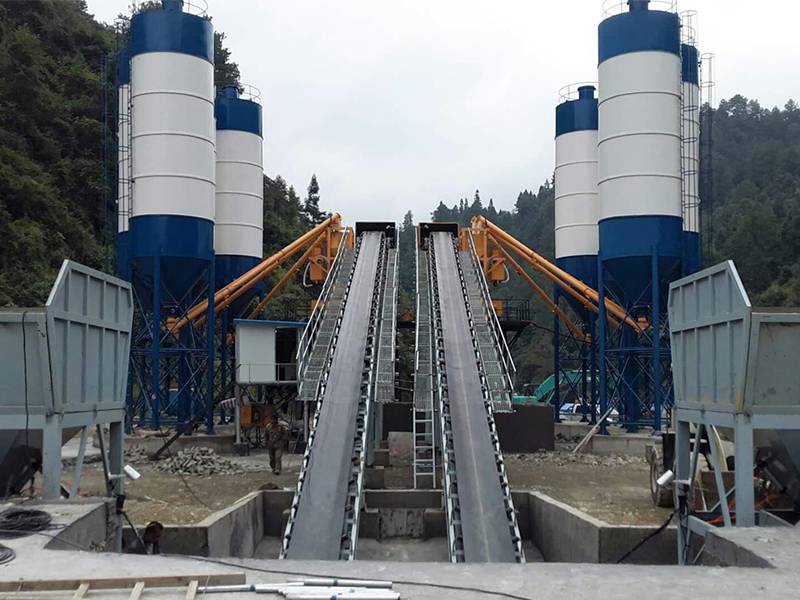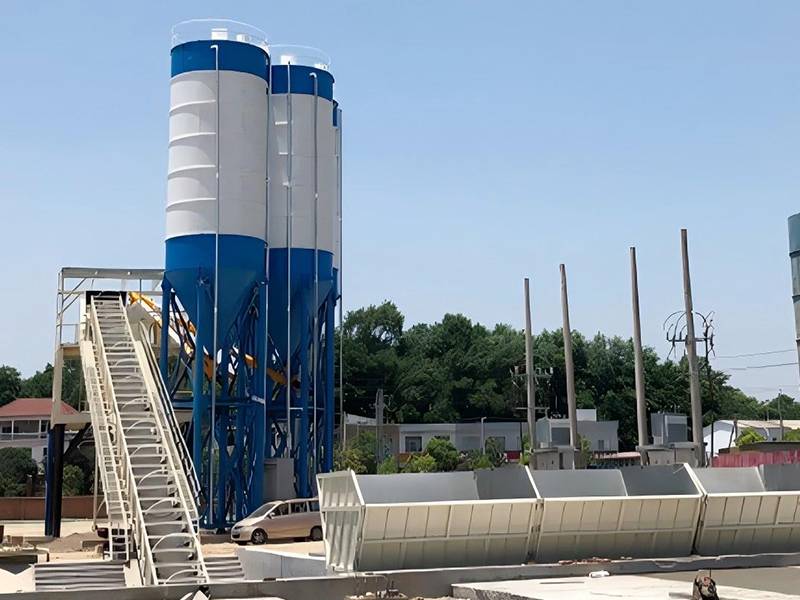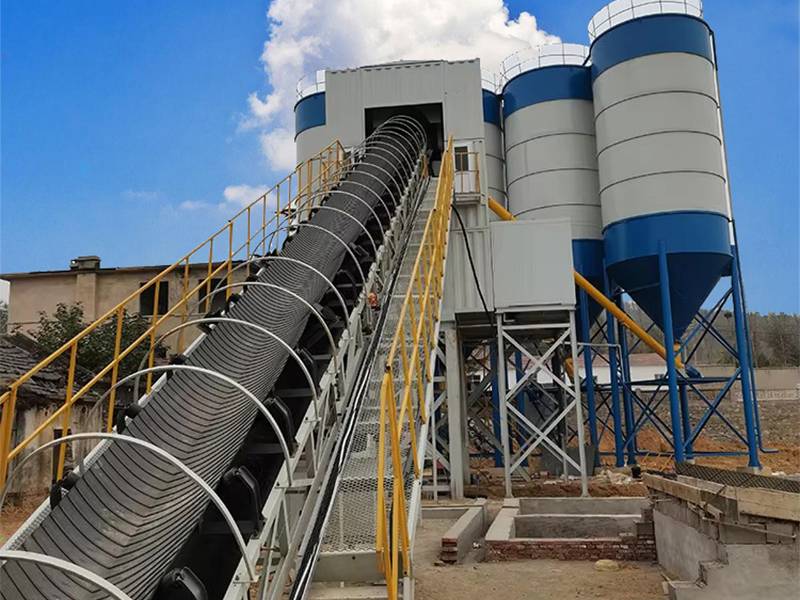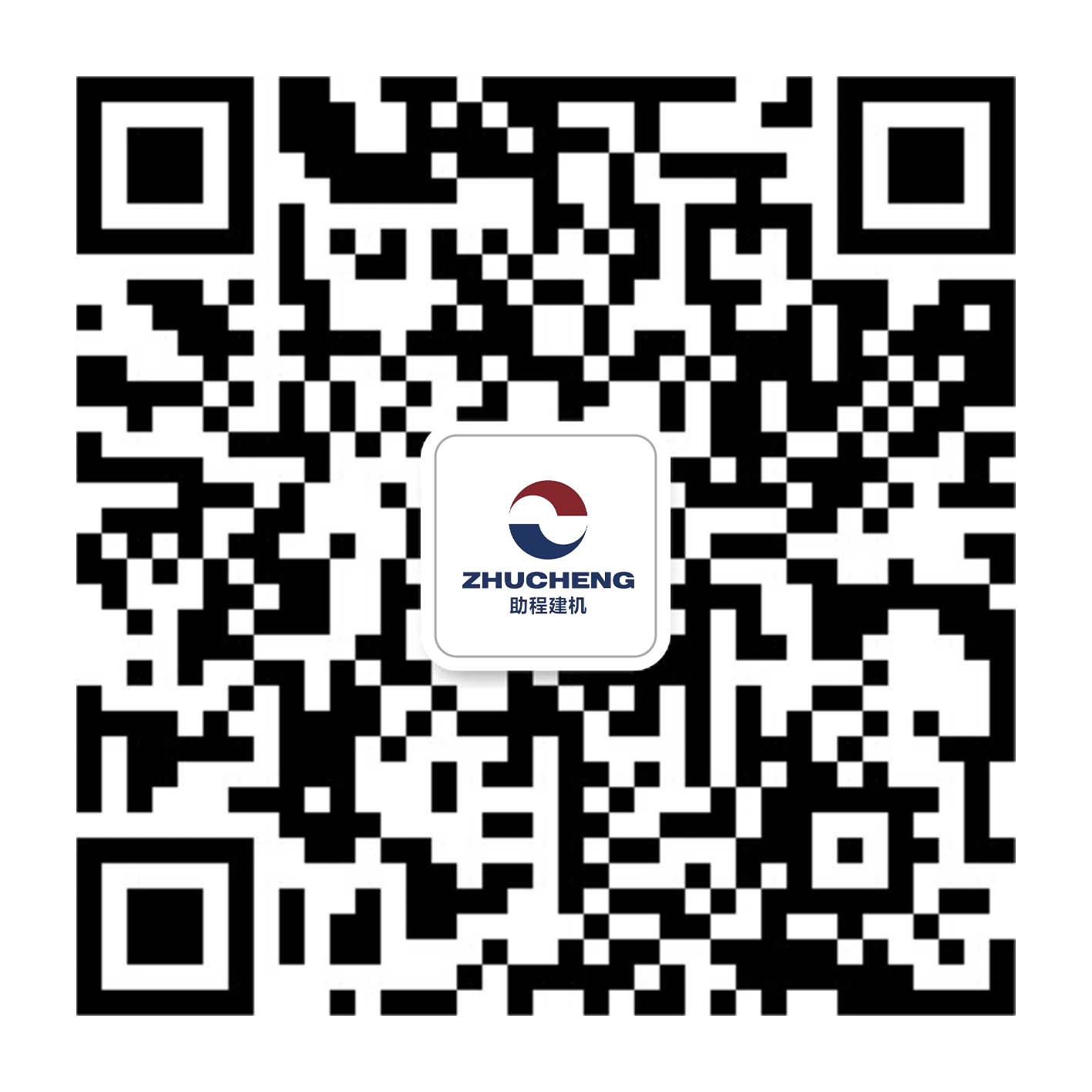Composition and Function of Belt Conveyor in Concrete Mixing Plant
In the production process of concrete mixing station, the belt conveyor plays a key role in material transportation, with high efficiency and high speed. However, once a fault occurs, all the production of the mixing station will be interrupted. Therefore, as a manufacturer of concrete mixing station technology, only by knowing the composition structure and installation steps of the belt conveyor can we do a good job in handling common faults and daily maintenance.
What is a belt conveyor
Belt conveyor is a machine driven by friction, which transports materials in a continuous way. The machine consists of a driving device, a tensioner, a conveyor belt intermediate frame and idlers. It uses the conveyor belt as a traction and bearing part, so as to continuously transport loose materials or finished products, and then continuously transport materials/objects from the initial feeding point to the final unloading point. This machine can not only transport broken materials, but also transport finished articles.
Classification of belt conveyors
According to bandwidth: 650mm, 800mm, 1000mm, 1200mm, etc.
According to the belt style and shape: flat belt, herringbone belt and skirt belt (Bucket belt or grooved belt).
Usually, the maximum inclination angle A of flat belt conveyor is ≤ 20°, and the inclination angles of herringbone belt conveyor and groove belt conveyor are relatively large, with herringbone belt reaching 27° and groove belt conveyor reaching 45°.



Components and functions of belt conveyor
1. Driving gear
It can be divided into three types: electric drum drive, belt drive and chain drive. Electric drum is a transmission roller whose motor and reduction gear are put into the roller. Belt drive is to drive the pulley through the rotation of the motor, and then the pulley drives the conveyor belt to run, so that the materials can be transported to the destination. Chain drive mainly relies on the meshing between chain and sprocket to transmit power, thus driving the conveyor belt or conveyor chain plate to run.
2. Tightener
(1) Screw tensioner: it is mainly adjusted by the movable bolt at the tail drum, with simple structure, convenience and small floor space. However, the tension distance is limited, so it can only be used for short-distance transportation equipment.
(2) Vertical tensioner: usually used for vertical conveyor, its principle is to adjust the tightness of conveyor belt by changing the position of supporting idler. Vertical tension loading has the advantages of simple structure, convenient adjustment and less damage to conveyor belt, but it is only suitable for vertical conveyor.
(3) Automatic tensioning device: it can automatically adjust the tension according to the tension of the conveyor belt to keep the stable operation of the conveyor belt. Automatic tensioning device is usually realized by hydraulic or pneumatic system, which has the advantages of fast response, stable tension and convenient use, but it needs maintenance.
(4) Fixed tensioner: It is usually used for short-distance conveyors, and its principle is to tighten the conveyor belt through tensioning wheels fixed at both ends of the conveyor belt. The fixed tensioner has the advantages of simple structure and low price, but its adjustment range is limited, so it is suitable for short-distance transportation.
3. Carrier roller
Roller is divided into turning roller, light roller, parallel upper roller, grooved upper roller and lower roller.
(1) Roller is a simple circular component that supports the conveyor belt or changes its running direction. It can support the conveyor belt, reduce the elasticity of the conveyor belt, protect the conveyor belt from damage, prevent the longitudinal tearing of the belt and maintain the stability of the conveyor belt.
(2) The reversing drum is a part of the belt conveyor, which is mainly used to change the running direction of the conveyor belt. It is usually composed of roller, bearing seat and bracket, and has the characteristics of simple structure, convenient use and maintenance. Light roller is a kind of light roller, which is usually used to support and guide the conveyor belt, and is suitable for light load and short distance transportation. It is simple in structure, light in weight and easy to install and maintain.
(3) Trough-shaped upper roller is a kind of roller with special shape, and its surface has grooves, which can better adapt to the shape and distribution of materials on the upper part of conveyor belt. This kind of consignment is usually used in conveyors with high requirements or unstable material shape.
(4) The lower idler is a common idler form, which is mainly used to support and guide the lower materials of the conveyor belt. This kind of lifting is simple in structure, can be installed horizontally or vertically, and is suitable for various types of conveyors.
3. Intermediate architecture part
Supporting and fixing supporting rollers and other parts, usually composed of steel or steel plates.
Assembly process of belt conveyor
1. Before assembling the belt conveyor of the mixing station, it is necessary to check whether there are damaged parts and whether the rotating parts rotate easily. If any abnormality is found, it should be repaired immediately. When installing each component, be sure to check the serial number and install it in an orderly manner.
2. On the pavement, the legs of the cable tray are connected with the truss by screws, and mechanical parts such as buffer rollers and conveyor belts are assembled on the truss. When lifting, ensure that the truss span arches 50 mm. The lifting truss is firmly connected with the head frame of the belt conveyor, and the legs are firmly connected with the foundation. The lifting tail beam is firmly connected with the tail frame of the belt conveyor. Then sweeper and other mechanical parts are assembled on the truss. After adjusting the mechanical parts of the belt conveyor, fix the rain cover of the belt conveyor firmly after adjustment.
3. When installing each buffer roller group and the reversing roller in the frame, check whether the center lines are parallel to each other and on a vertical line, and whether they are vertical to the truss axis. The connecting anchor bolts of steel frame structure must be consistent with the design drawings, especially where high-strength bolts are needed, and ordinary anchor bolts cannot be used instead.
4. When installing the belt, should first turn the drum to the front, make the belt tension is moderate, the joint should be glued.
5. Components shall be properly maintained during storage at the site, and shall be painted once after all installation is completed.
Function of belt conveyor
The function of belt conveyor mainly includes the following aspects:
Large conveying capacity: the belt conveyor can convey up to 1280 cubic meters of materials per hour to meet the needs of various production environments.
Strong adaptability: the specifications of the conveyor are diverse, and the appropriate thickness, width and material can be selected according to the characteristics of the transported materials. Its transportation lines are flexible and can be designed as mobile, lifting and telescopic to meet different production needs.
Anti-skid design: the anti-skid design on the conveyor belt reduces the spillage of materials during transportation and increases the transportation volume.
Site adaptation: especially suitable for commercial concrete mixing station with loose site and high degree of automation.











